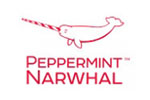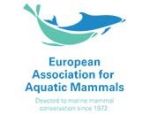
Home / Research & Conservation / Research Grant /
IMATA Research Grant
Grants Awarded
YEAR |
PROPOSAL TITLE |
PRINCIPLE INVESTIGATOR(S)
|
CO-INVESTIGATOR(S)
|
AWARD AMOUNT |
PROJECT DESCRIPTION |
| 2011 | Physiological Effects of Artificial Weaning on Sea Lion Pups |
Brandon T. Davis, Physiological Ecology and Bioenergetics Lab University of Central Florida and SeaWorld Orlando |
$2070.00 | Little is know about what occurs physiologically to a sea lion pup when it is weaned from its mother in an abbreviated period of time than that which occurs in a natural setting. This study will investigate how developmental changes, such as body mass, girth measurements, blubber depth, blood values, and thyroid hormone levels differ as sea lion pups are weaned at five, seven, and nine months of age. | |
| Comparing Dietary Consumption of Iron in Wild Versus Captive Dolphins |
Rita Stacey, Chicago Zoological Society, Brookfield Zoo |
$2500.00 | Extra iron can build up in the liver and other organs which can lead to health problems. This study will compare the dietary consumption of iron in wild dolphins to that of dolphins in human care. Nutritional and mineral analyses of fish in native and non native diets will be correlated to the iron levels of the dolphins. | ||
| 2012 | Investigation of the Physiological Adaptations of Marine Mammals |
Joseph Gaspard, Mote Marine Laboratory |
Traci Kendall, Long Marine Laboratory University of California, Santa Cruz |
$3000.00 |
The physiological adaptations of marine mammals has long been an area of study, however growing concerns of acute and chronic pressures on ocean species necessitates a better understanding of these capabitlities and how they may be impacted. The metabolic and heart rates of four species will be examined through trained behaviors to grow the knowledge-base, providing insights into novel species that exist in unique niches, and highlight conservation implications. |
| 2013 | Aerobic Dive Limits of Hawaiian Monk Seals (Neomonachus schauinslandi) |
Traci Kendall, |
Beau Richter, Long Marine Laboratory University of California, Santa Cruz |
$3000.00 | The overall goals and methods for this project aim to determine the differences in the aerobic dive limit (ADL) of immature and adult Hawaiian monk seals and ultimately the effects this has on survivorship. Accomplishing this includes determination of resting and diving metabolic rates, myoglobin concentration in major locomotor muscles, and total blood volume in immature and adult Hawaiian monk seals. Ultimately, this project will produce a metabolic and energetic profile of Hawaiian monk seals enabling prediction of caloric requirements for immature and mature monk seals, as well as a defined aerobic dive limit aiding in the determination of suitable and critical habitats. |
| Dietary Consumption of Tannins in Common Bottlenose Dolphins? Natie and Non-Native Diets and its Possible Effects on Iron Absorption |
Rita Stacey, Chicago Zoological Society, Brookfield Zoo |
$3000.00 | |||
| 2014 | Sound localization abilities of two loggerhead turtles (Caretta caretta) |
Holly West, Mote Marine Laboratory |
$2550.00 | ||
| Salivary cortisol levels in California sea lions (Zalophus californianus) |
Joseph Gaspard, Pittsburgh Zoo & Ppg Aquarium |
Michelle Farmerie, Pittsburgh Zoo & PPG Aquarium |
$1450.00 |
This study sets out to examine the effects of social, environmental, and/or situational changes on hypothalamic-pituitary-adrenal (HPA) axis activity in California sea lions. The sea lions housed at the Pittsburgh Zoo & PPG Aquarium have been trained to allow for regular saliva samples to be collected. Preliminary sampling has occurred to establish baseline values, validate methodology, and take advantage of opportunistic occurrences with 1.5 California sea lions. These collection attempts were assayed for cortisol and alpha amylase finding sufficient yield volumes for saliva testing. Initial findings suggest that sea lions housed at facilities can be trained to enable the collection of saliva samples, cortisol can be reliably measured in oral fluid collected, and salivary cortisol appears to be sensitive to the effects of contextual change in this species. Sampling has and will focus on a number of accepted practices (i.e. transport, collection changes, social dynamic shifts, illness, injury, etc.) that are deviations of normal activities. |
|
| 2016 | Comparison of fecal adrenal hormone levels between wild and professionally-managed bottlenose dolphins |
Rita Stacey, Chicago Zoological Society |
$2800.00 |
The proposed project will be the first of its kind to examine DHEA and its ratio with cortisol in cetaceans. Ultimately, information from the proposed study could inform management of dolphins in zoos and aquariums, ensuring that these animals are experiencing good psychological health and have opportunities to thrive. |
|
| 2019 | Energy Expenditure in Common Bottlenose Dolphins |
Austin Allen, |
Herman Pontzer, Duke University |
$2400.00 | The objective of this study is to understand metabolic physiology in the common bottlenose dolphin. |
| 2021 | Horned Puffin Study |
Melissa Vindigni, North Carolina Zoo |
Sally Adams, North Carolina Zoo Lindsey Zarecky, Greensboro Science Center |
$2670.00 |
The goal of this study is to identify call types and their associated behaviors as well as the identification of individual birds through vocalizations. This research could greatly assist zoo keepers and scientists monitoring the health and stress levels of colonies while providing a clearer activity budget of birds in a non-invasive manner. |
The IMATA Research Grant was established in 2011 to provide financial support for research projects which address IMATA's Mission. All submissions underwent a rigorous and competitive two-tier review process before the IMATA Research and Conservation Committee submitted funding recommendations to the IMATA Board for consideration.
















